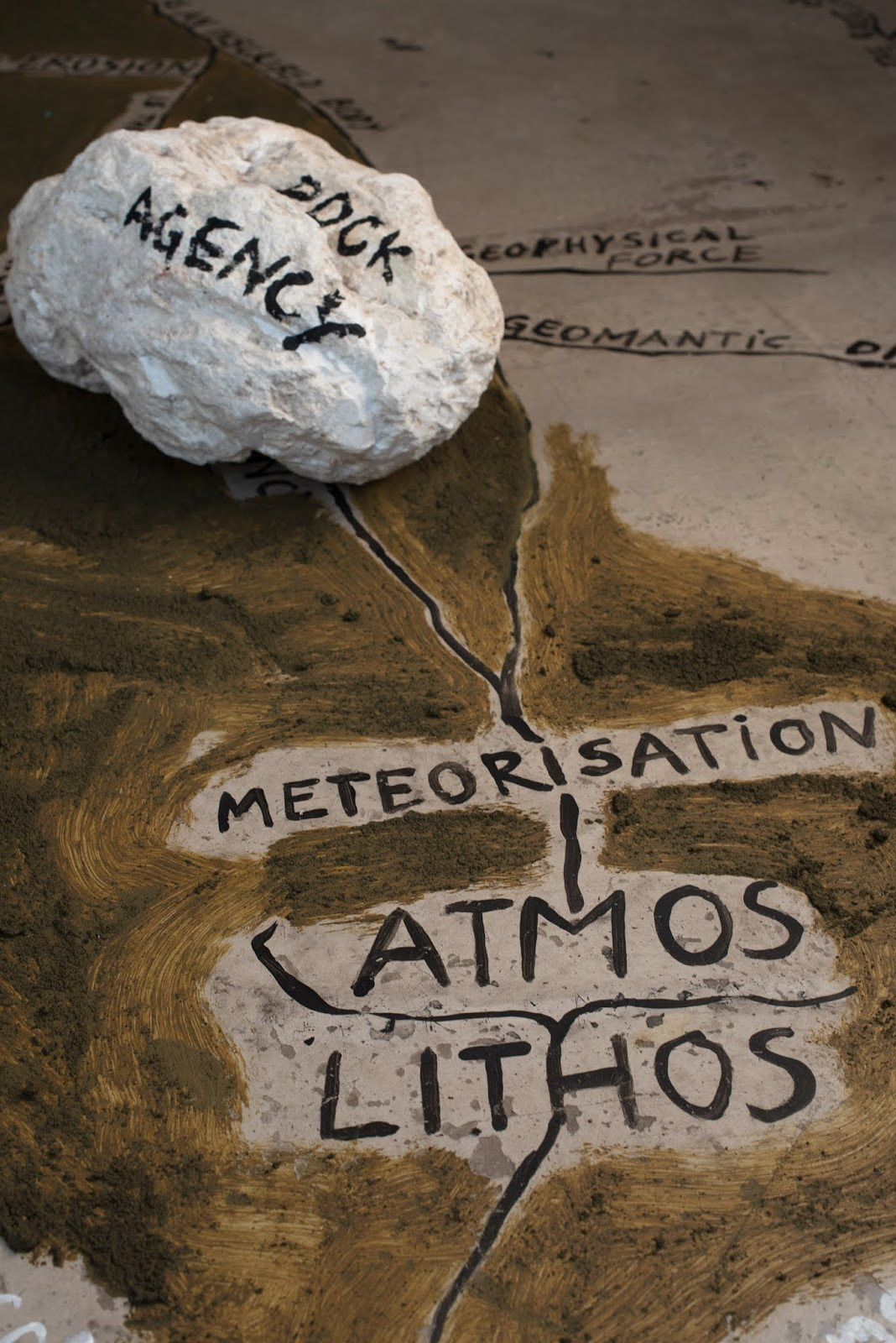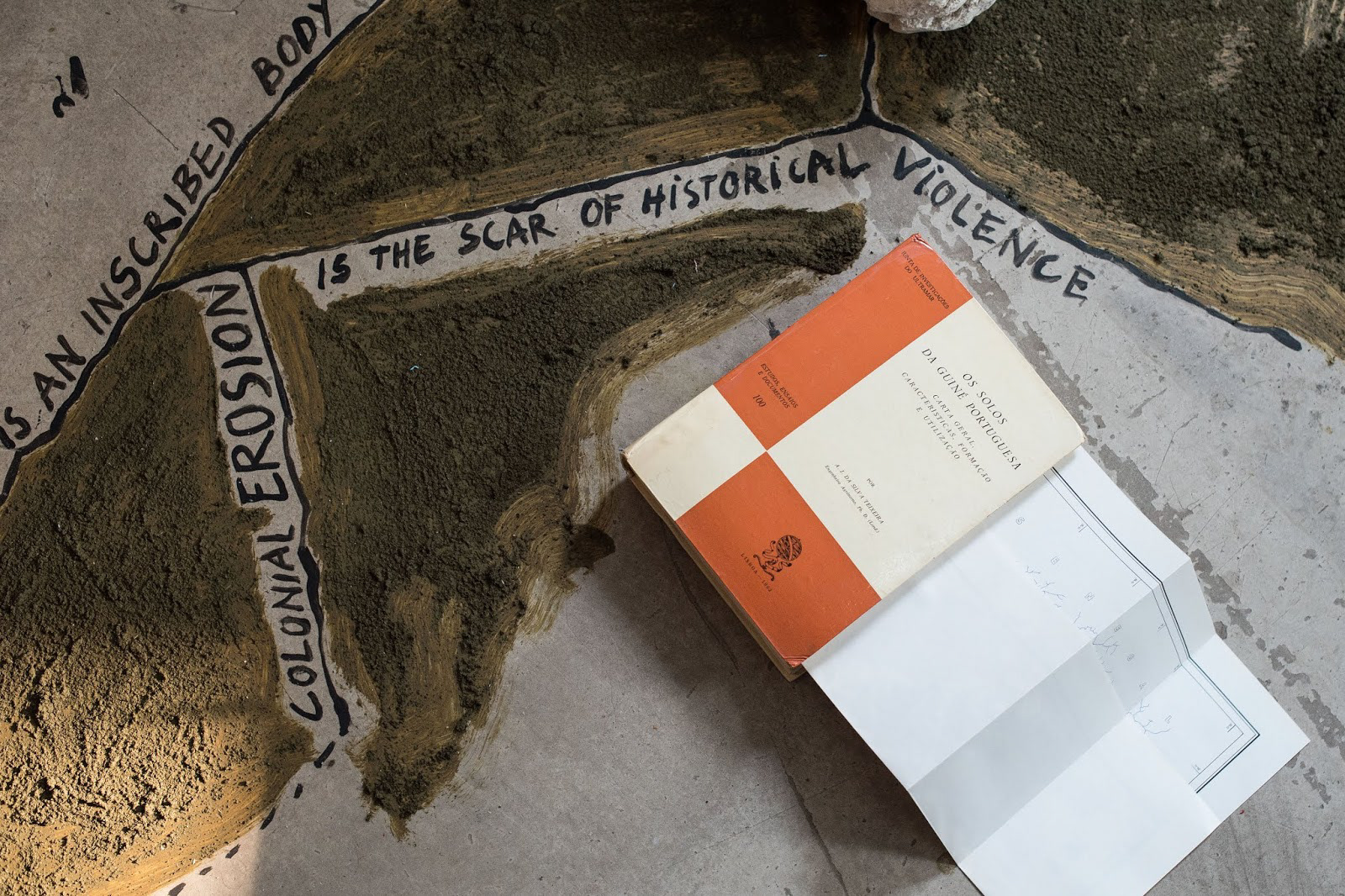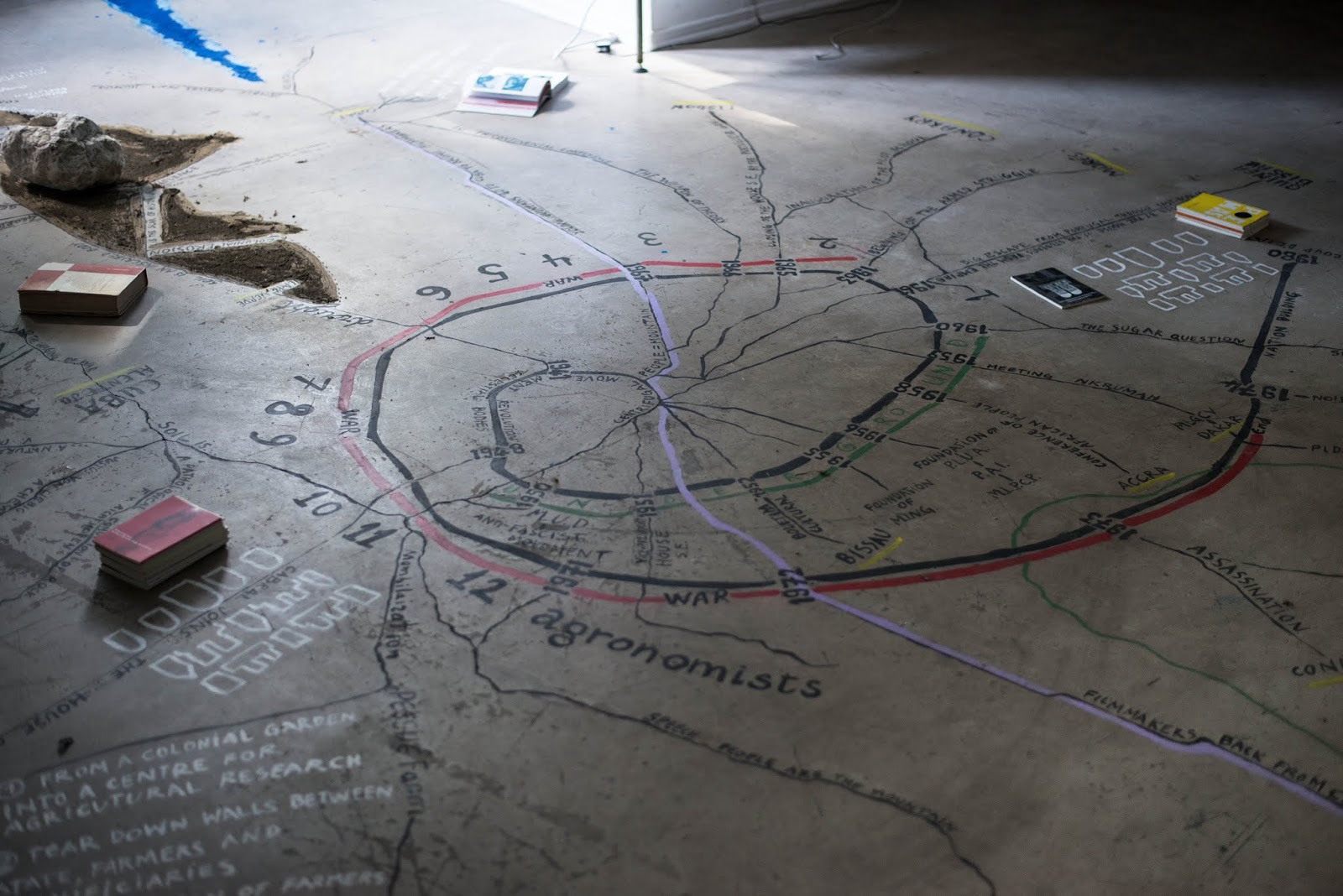In August 2019, I engaged in a collaborative endeavor titled "Mapping Cabral," alongside Filipa Ceaser and Ali Yass. The primary objective of this project was to interpret the text on Cabral, authored by Filipa, by means of creating a cartographic representation or an artistic installation. This undertaking proved instrumental in immersing me into the realms of agriculture and food distribution. Moreover, it offered fresh insights into the multifaceted persona of Cabral, known not only as a freedom fighter but also as a "Scientist Agronomist" artist.
Over the course of two months, our diligent efforts led us to scrutinize Cabral's biography and delve into his philosophical perspectives. Of particular significance was our exploration of how Cabral's profound connection with the soil furnished him with the knowledge and means to dismantle the colonial system that prevailed during his time.
Notably, our research revealed Cabral's lesser-known role as a poet and agronomist. One of the most remarkable excerpts from the text by Filipa illuminates Cabral's final official act as a state agronomist, wherein he advocated for the implementation of sugar beet plantations in Portugal. This proposition sought to capitalize on the rising European demand for sugar and offered a profitable domestic alternative to reduce dependence on the exploitation of sugarcane in overseas tropical territories.
The installation space we curated served as a platform for diverse intellectual engagements, encompassing various talks, workshops, and discussions concerning environmental issues, agriculture, and activism. Through these interactive events, we fostered a conducive environment for dialogue and introspection on critical matters of societal importance.
Here is a link for the exhibition page: https://savvy-contemporary.com/en/projects/2019/soil-is-an-inscribed-body/?fbclid=IwAR3kK90HHdHMJkW0ofSQp-GAp6Df8CLPEj_uviVyMsqjEDI-PzpvpVrRBNk
The acrylic work on the Floor is 13 Square meter








